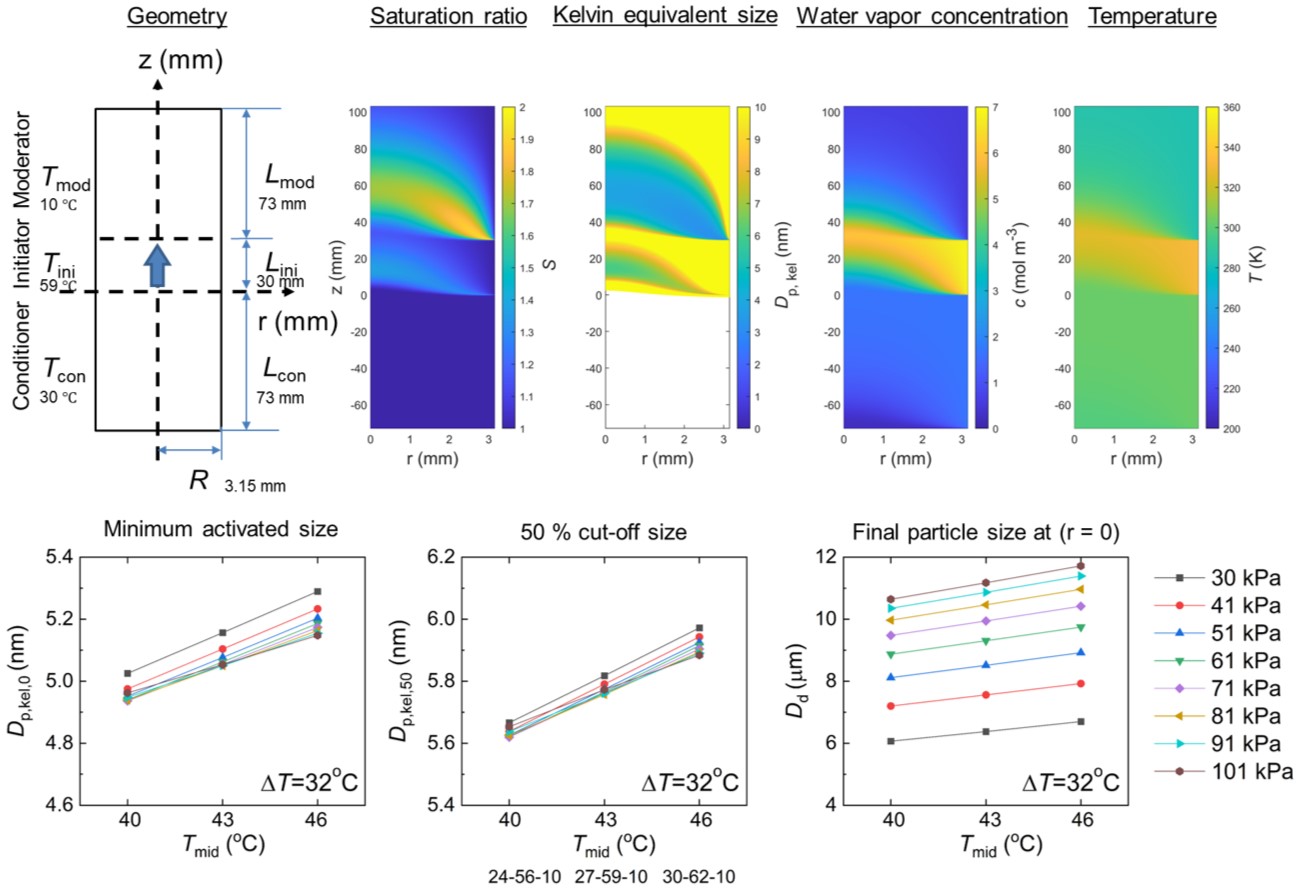Mapping the performance of a versatile water-based condensation particle counter
Submitter
Wang, Yang — University of Miami
Mei, Fan — Pacific Northwest National Laboratory
Area of Research
Aerosol Properties
Journal Reference
Hao W, F Mei, S Hering, S Spielman, B Schmid, J Tomlinson, and Y Wang. 2023. "Mapping the performance of a versatile water-based condensation particle counter (vWCPC) with numerical simulation and experimental study." Atmospheric Measurement Techniques, 16(17), 10.5194/amt-16-3973-2023.
Science

Figure 1. The simulated design and internal parameters of vWCPC, alongside the effects of temperature and inlet pressure variations on particle activation and growth. From journal.
Airborne aerosol instrumentation plays a crucial role in understanding the spatial distribution of ambient aerosol particles. This study investigates a versatile water-based condensation particle counter (vWCPC) through simulations and experiments. It provides valuable insights to improve vWCPC measurement and operation for the community.
Impact
We highlight that the temperature difference between the conditioner and initiator temperatures, as well as lowering the temperature midpoint, enhances particle activation efficiency in the vWCPC under both standard- and reduced-pressure conditions, crucial for improving the detection of smaller aerosol particles in diverse atmospheric conditions. This study provides insights into the design and operational parameters (especially inlet pressure) of vWCPCs, guiding the development of future airborne aerosol instrumentation for atmospheric research and monitoring.
Summary
This study evaluated the particle activation and droplet growth performance of a commercial versatile water CPC (vWCPC) using COMSOL in combination with MATLAB™ data processing. In addition, validation experiments on the detection efficiency of the modified vWCPC (TSI 3789) agreed with the simulation work. Increasing the temperature difference between Tcon and Tini and lowering the temperature midpoint can enhance particle activation at both standard and reduced ambient pressure conditions. However, the lack of droplet growth becomes more significant under low-pressure operations, which will affect the apparent counting efficiency of the vWCPC due to the limited measurable size range of the optical chamber. Additionally, reducing the diameter of the growth tube slightly improved particle activation but significantly reduced the droplet growth, while increasing the initiator length had a limited effect on improving the performance of the vWCPC at both standard and reduced pressure.
This study will guide further vWCPC performance optimization for applications requiring precise particle detection and atmospheric aerosol monitoring. Furthermore, the developed simulation capability provides a vital tool for the aerosol community to understand the effects of temperature, pressure, and geometry on vWCPC behavior. The knowledge gained will guide the field deployment of vWCPCs on the ground level and airborne measurements. However, limitations of this modeling approach likely lie in the computational capacity and the difference from actual flow and temperature profile distribution in the growth tube (due to nonideal temperature control and system configuration). Thus, several future experimental studies will be carried out to investigate the performance of the vWCPC.
Keep up with the Atmospheric Observer
Updates on ARM news, events, and opportunities delivered to your inbox
ARM User Profile
ARM welcomes users from all institutions and nations. A free ARM user account is needed to access ARM data.


















